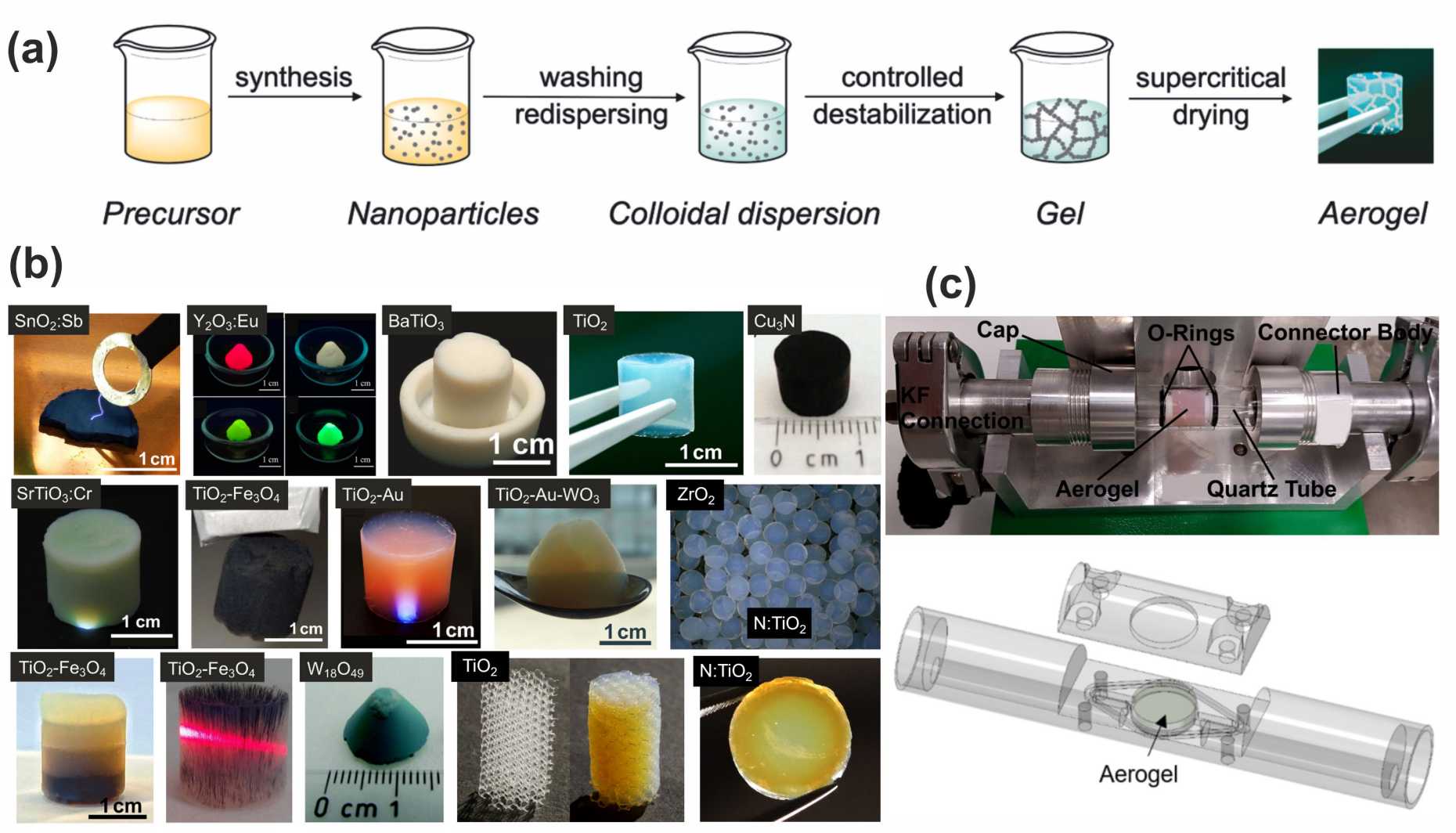Aerogels for Photocatalysis and Reactor Design
Aerogels are highly porous, sponge-like materials consisting of a disordered three-dimensional nanostructure. With a solid content often less than five percent by volume, aerogels are composed mainly of air, which makes them among the lightest human-made solid materials. Despite these intriguing properties and the resulting great potential for applications in catalysis and photocatalysis, aerogels have only been synthesized in a relatively small variety of compositions and typically with low crystallinity, mainly due to the sol-gel chemistry-based synthesis approach.
The Multifunctional Materials Laboratory has been working for several years on the development of aerogels from preformed nanoparticles. The strategy involves the synthesis of nanoparticles with defined composition, crystallinity, size, shape and surface chemistry, their processing into colloidal dispersions and their gelation (Figure 1a). After solvent exchange and supercritical drying, a wide range of aerogels can be obtained, with macroscopic shapes ranging from simple monoliths to complex geometries or granules (Figure 1b). These aerogels are tested for their photocatalytic properties in specially developed reactors that we designed and built ourselves (Figure 1c).
